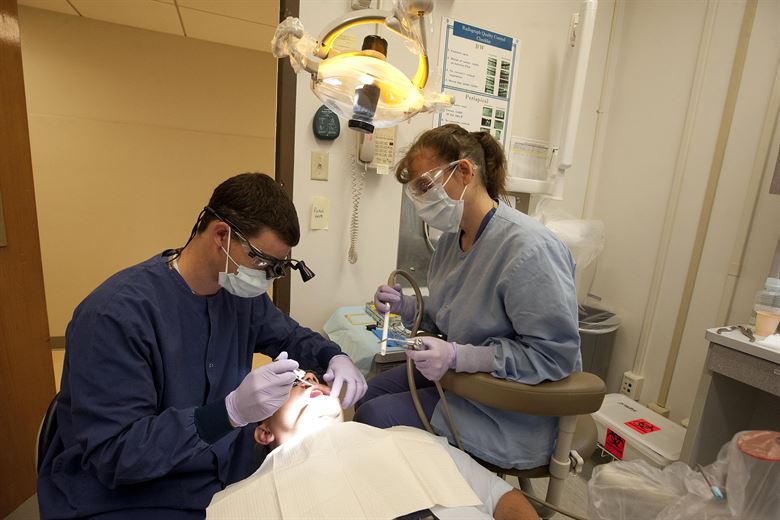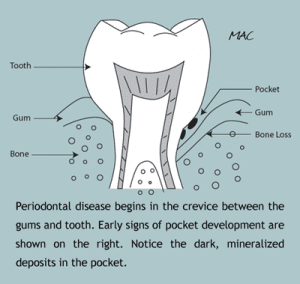
How to Choose The Best Periodontist
Periodontists offer cosmetic periodontal surgery, dental implants, surgical and non-surgical services, and gum disease treatment.
Early diagnosis and immediate treatment of Periodontal Disease is imperative. If the condition remains untreated, not only will tooth loss inevitably occur, but the patient is at risk for other serious health conditions. The inflammation associated with periodontal disease has been linked to heart disease, Alzheimer’s disease, arthritis, diabetes, and cancer. Utilizing the most current technology to ensure accurate diagnosis, a periodontist can recommend the best treatment options available, designed personally for your individual condition.
- American Board of Periodontology
- American Academy of Periodontology
- International Congress of Oral Implantologists
Periodontal Surgical Procedures
Contents
Periodontists provide a variety of periodontal surgical services. In general, they are very conservative in their treatment recommendations and limit surgery to the areas where it is necessary. These procedures may be done to treat diseased areas or to restore function and esthetics.
Dental Implants
Dental implants are changing the way people live. With them, people are rediscovering the comfort and confidence to eat, speak, laugh and enjoy life. Dental implants are designed to provide a foundation for replacement teeth which look, feel, and function like natural teeth. The implants themselves are titanium posts, which are placed into the jawbone where teeth are missing. The bone integrates with the titanium, creating a strong bond, to which replacement teeth are attached. Also, implants can help preserve facial structure, preventing bone deterioration, which occurs when teeth are missing.
Periodontal Osseous Surgery
In most cases, gum disease is treated by eliminating or shrinking the gum pockets. The ultimate goal of periodontal osseous surgery is to create architecture conducive to good oral hygiene, which will allow for removal of infected bacteria that generally populate the periodontal pocket. The periodontal pocket is made up of both a soft and hard tissue. The bone pathology results in defects within the bone anatomy. The surgical treatment of gum disease is achieved by trimming away the gum tissue and by re-contouring the bony defects, recreating an architecture, which reduces the depth of the gum pockets and allows good oral hygiene to be accomplished.
Bone Grafting
When teeth are extracted or lost, the bone that previously supported those teeth no longer serves a purpose and begins to deteriorate, or reabsorb. This loss often leaves a condition in which there are poor quality and quantity of bone suitable for placement of dental implants. In these situations, we now can grow bone where needed. New bone gives us the opportunity to place implants of proper length and width, and it also gives us a chance to restore esthetic appearance and function more effectively.
Periodontal Bone Regeneration
This surgical procedure “regenerates” the previously lost bone tissue. Most techniques utilize artificial membranes together with an artificial bone to regenerate the bony defects.
Crown-Lengthening
Crown-lengthening (clinical “lengthening” of the tooth) is done for either functional or aesthetic considerations. This involves the removal of the gum alone and also sometimes the underlying bone.
Various indications which require a crown-lengthening procedure:
- Insufficient tooth structure for restoration: If a tooth breaks at or below the gum line, it can sometimes create difficulty for the dentist to repair it. Crown-lengthening can be done to expose more tooth structure so that the tooth can be restored.
- Tooth decay below the gum line: When decay occurs below the natural gum line, your dentist may not be able to access the area to restore it. Crown-lengthening allows the decayed area to be exposed and the restoration to be completed.
- “Gummy” smile: A “gummy-looking” smile occurs when excess gum tissue covers the natural crowns of the teeth causing them to look too short. This is due to the gum tissue not undergoing its “natural” recession leaving it in a position where the crown of the tooth is covered leaving a “gummy” smile.
Sinus-Elevation Procedure
A sinus lift is a surgery that adds bone to your upper jaw in the area of your molars and premolars. It’s sometimes called a sinus elevation. The bone is inserted between your jaw and the maxillary sinuses, which are on either side of your nose. To make room for the bone, the sinus membrane has to be moved upward, or “lifted.” A sinus elevation usually is done by a specialist. This specialist may be either an oral and maxillofacial surgeon or a periodontist.
Non-Surgical Services
Scaling and root planing
Scaling and root planing is a non-surgical procedure. It may involve from 2 to 4 appointments. The result of this procedure is to create a smooth, clean, healthy root surface, which allows the gum tissue to re-adhere to the teeth. There are limitations to what scaling and root-planing can accomplish. The deeper the pocket, the less effective scaling and root-planing are, and this may necessitate other procedures to help treat the problem. Effective preventive plaque control techniques will be taught and emphasized at all visits.
What is Periodontal Disease?
Periodontal disease is a bacterial gum infection that destroys the gum and bone that support your teeth. Early diagnosis and immediate treatment are vital to maintaining a healthy smile and protecting your teeth.
 The leading cause of periodontal disease is a bacterial plaque, a sticky, colorless film that constantly forms on your teeth. If the plaque is not removed, it can turn into a hard substance called calculus or tartar in less than two days.
The leading cause of periodontal disease is a bacterial plaque, a sticky, colorless film that constantly forms on your teeth. If the plaque is not removed, it can turn into a hard substance called calculus or tartar in less than two days.
Tartar is so hard it can only be removed with the proper tools by an oral health professional. Utilizing proper brushing techniques twice per day, flossing at least once per day, and keeping your routine dental cleanings with your general dentist, is the best way to avoid plaque and tartar buildup.
The bacteria in plaque infects the gums and release poisons that cause redness and inflammation. The inflammation and the toxins destroy the tissues and bone that support the teeth. When this happens, the gums separate microscopically from the teeth, forming pockets that fill with more plaque causing more infection.
Not only do periodontal issues affect the health of your teeth, but the health of your entire body. Don’t wait to contact a dental healthcare provider. If you are troubled with red and inflamed, potentially bleeding, gums, call a periodontist so they can evaluate the extent of your periodontal issues and get you on a treatment plan back to healthy gums and teeth.
Periodontal Maintenance Therapy
Once your periodontist has completed the active phase of periodontal treatment, your periodontal disease will be carefully monitored. He will provide you with a personalized maintenance program to keep your gums healthy. Periodontal Maintenance Therapy is an ongoing program designed to prevent disease in the gum tissues and bone supporting your teeth. Remember that periodontal disease is treatable and maintainable but is not curable. Adherence to a program of conscientious home oral care and regularly scheduled maintenance therapy visits with your dentist and periodontist will give you an excellent chance of keeping your teeth for your lifetime.
Unless they remove the plaque, it hardens into a rough, porous deposit called tartar (calculus). Daily brushing and flossing will help to minimize the formation of calculus, but it won’t completely prevent it. No matter how careful you are in cleaning your teeth and gums, bacterial plaque can cause a recurrence of gum disease from two to four months after your last professional cleaning. Therefore, a dental professional must check for hidden problems and remove the hardened plaque at time intervals appropriate for you so that your teeth and gums stay healthy.
Your periodontist, together with your general dentist, will work out the most effective schedule for your periodontal maintenance care. The interval between your maintenance visits might be as frequent as every few weeks or as often as every six months. Your general dentist and periodontist will combine their experience to formulate the best maintenance plan for you keeping each other informed of your progress. Appointments for periodontal maintenance do not replace regular dental checkups. Your general dentist is primarily responsible for your overall dental health, including such dental needs as filling new or recurrent cavities or making changes in fillings, crowns or bridges.
Recurrent Disease Episodes
Periodontal diseases will recur if you do not follow a strict program of supportive periodontal care. You play a significant role in preventing further episodes of periodontal disease by daily preventive plaque control (brushing and flossing) and periodontal maintenance therapy visits between your dentist and periodontist.

